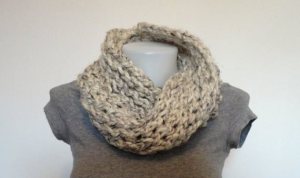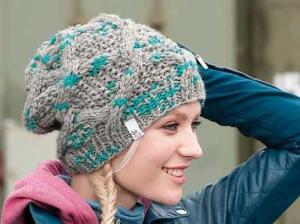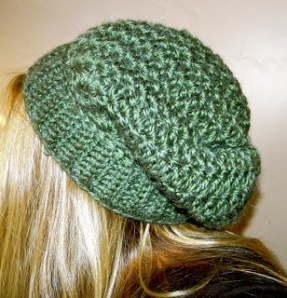2014 Crochet Trend #1: Big, Bulky Yarns
It seems manufacturers are increasingly expanding their lines of super bulky yarns. When I first learned to crochet, I wasn’t a fan of these yarns. I just never saw the appeal.
Until I happened to pick up a skein of Yarn Bee’s Effortless Super Bulky yarn at Hobby Lobby one day, and was hooked. (Cheesy pun intended.)
It’s an 80% acrylic, 20% alpaca blend, and it’s so light and soft and warm… not to mention very easy to work with. Completing a project with this, or just about any other super bulky yarn, is a breeze! But these really are among my favorites.

Thinner yarns will never be replaced for more delicate, intricate projects, but for warm, winter scarves and hats, hoods and vests, you just can’t beat the ease, texture, and warmth of super bulky yarns. And it’s perfect for making thick, chunky cowls.
2014 Crochet Trend #2: Faux Fur
Faux fur is one of my favorite trends. I’m a huge supporter of animal rights, and I love faux fur for so many reasons. People who like the look of fur can get it without supporting the industry. And faux fur draws attention to a very important issue. The more people who are aware of it, the more of a chance there is to change it. (I’ll get off my soapbox now.)
Anyway, as with bulky yarns, it’s a growing trend, and we’re seeing more and more varieties being produced. Lion Brand’s Fun Fur is one of my favorites; it comes in a variety of colors, and is perfect for just about any project.
2014 Crochet Trend #3: Grey
Grey is this year’s popular neutral color.
I have a lot of grey clothing – everything from shirts and sweaters to heels and dresses. It’s easy to mix and match a grey accessory with just about any outfit.
So I’m excited to see the color grey becoming more popular. It’s always been rather underrated, in my opinion.

And it’s not just that grey is becoming popular, but grey with pops of bright, neon colors. This grey and neon yarn, by Schachenmayr, called Lova, and cabled hat pattern on Craftsyare two of my favorites. The pattern especially makes me want to take up knitting! Speaking of hats…
2014 Crochet Trend #4: Hats
Apparently, scarves are out and hats are in!
I have mixed feelings about this, as I’ve always been more of a scarf person. I do love big, deep hoods though. (Not small ones; they just fall down.)

And, I found this absolutely amazing free hat pattern. I’m very picky when it comes to hats, but this one… this one is perfect.
So keep up with the trends, and make yourself a new hat this season!
2014 Crochet Trend #5: Arm Knitting
I have to admit, I haven’t tried this yet, but I need to! It looks like a fun way to learn the basics of knitting, and then translate those basics to working with needles instead of arms. This video tutorial for arm knitting was one of the clearer ones that I found.
